
News • Unified framework
Establishing a global standard in sepsis and critical care
The heterogeneity of critical illnesses like sepsis, ARDS, and trauma creates immense challenges. A new, unified way to classify patients aims to improve treatment.

The heterogeneity of critical illnesses like sepsis, ARDS, and trauma creates immense challenges. A new, unified way to classify patients aims to improve treatment.

Chronic cough affects approximately 1 in 10 adults in the UK, but the causes are often unknown and treatment options limited. Now, a new study has identified neurological mechanisms as key drivers.
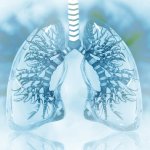
Researchers present a new method for generating human alveolar epithelial type I cells. This could ultimately progress therapies for people living with pulmonary diseases.
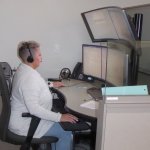
In their pursuit of solutions for pandemic challenges, a US hospital system applied telemedicine principles to respiratory therapy – with impressive results.
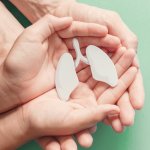
Researchers at Lund University in Sweden and Skåne University Hospital have conducted an animal study bringing hope that more donor lungs could be used in the future.

An animal study brings hope that more donor lungs could be used in the future. The researchers have launched a pilot study to investigate whether the treatment will have the same positive effects on human beings.
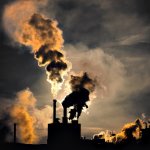
A comprehensive assessment of scientific literature has uncovered empirical evidence that more than 58% of human diseases caused by pathogens, such as dengue, hepatitis, pneumonia, malaria, Zika, have been aggravated by climatic hazards.

Scientists have grown beating heart cells to attempt to identify drugs to prevent Covid-19-related heart damage. Concerns over the extent of cardiac damage among Covid patients emerged during the coronavirus pandemic and there are also suggestions that the impact on cardiomyocytes could contribute to the symptoms of long Covid. To explore these issues, a research team at the University of…

Scientists at the U.S. Department of Energy's (DOE) Brookhaven National Laboratory have published the first detailed atomic-level model of the SARS-CoV-2 "envelope" protein bound to a human protein essential for maintaining the lining of the lungs.
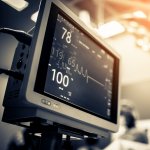
Researchers used AI to identify which daily changing clinical parameters best predict intervention responses in critically ill Covid-19 patients. The investigators used machine learning to predict which patients might get worse and not respond positively to being turned onto their front in intensive care units (ICUs) - a technique known as proning that is commonly used in this setting to improve…

The largest study of its kind in the UK has identified differences in the immune response to Covid-19 between people with no symptoms, compared to those suffering a more serious reaction to the virus. The research by Newcastle University and collaborators within the Human Cell Atlas initiative found raised levels of specific immune cells in asymptomatic people. They also showed people with more…
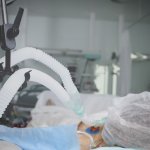
An unfortunate truth about the use of mechanical ventilation to save the lives of patients in respiratory distress is that the pressure used to inflate the lungs is likely to cause further lung damage. In a new study, scientists identified a molecule that is produced by immune cells during mechanical ventilation to try to decrease inflammation, but isn’t able to completely prevent…
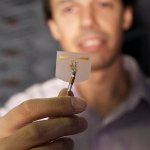
Scientists at Heriot-Watt University have developed a technique that monitors a patient’s vital signs completely touch free. By using a continuous wave radar-based system to sense tiny chest movements, the new method can accurately measure an individual’s heart rate and respiratory rate without the need for wires, probes, wearable technology or other skin attachments. It could also identify…

An up-and-coming gene therapy for blood disorders. A new class of medications for cystic fibrosis. Increased access to telemedicine. These are some of the innovations that will enhance healing and change healthcare in the coming year, according to a distinguished panel of clinicians and researchers from Cleveland Clinic. In conjunction with the 2020 Medical Innovation Summit, Cleveland Clinic…
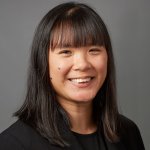
Ultrasound could become the prime modality in emergency settings for tracking disease progression in COVID-19 patients. While chest CT has held a key diagnostic role thus far, many experts now advocate the benefits of ultrasound within the context of the coronavirus epidemic. Dr Rachel Liu, who recently led a high-profile panel discussion with experts from the USA and areas of Europe with high…
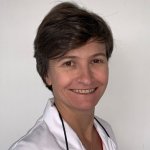
A recent preprint study in France underpins the debate on whether lung ultrasound (LUS) should be used to triage COVID-19 patients better at the hospital as well as in primary care. The eChoVid study, published as a preliminary report of work on medTrix, shows that LUS enables identification of lung lesions as well as chest CT in COVID-19 patients. A team of French researchers compared routinely…
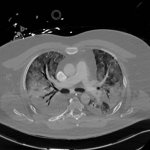
There are major complications from COVID-19 – ARDS, pulmonary embolism and neurological – that imaging can help detect, manage and/or follow up in the long term, radiologists from France and the UK explained during a recent ESR Connect session. ARDS is the most dreaded complication and the number one morbidity in COVID-19 patients. The incidence was up to 30% of patients in initial reports.…
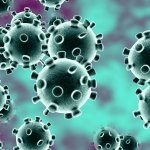
Which patient will develop a severe form of COVID-19? This is an essential question which must be answered in order to improve the individual management and the prognosis of these patients. In a publication in the journal Science, teams from the Assistance publique – Hôpitaux de Paris (AP-HP), Inserm, Université de Paris, Institut Pasteur and Institut Imagine describe a unique and unexpected…
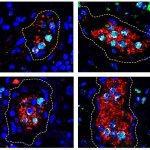
An overactive defense response may lead to increased blood clotting, disease severity, and death from COVID-19. A phenomenon called NETosi is part of an immune response that becomes increasingly hyperactive in people on ventilators and people who die from the disease.
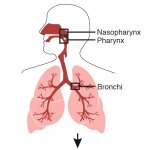
Infection with the novel coronavirus SARS-CoV-2 follows a highly variable course: some of those infected do not even notice it, while others become so seriously ill that their lives are placed at risk. Scientists from the Berlin Institute of Health (BIH) and Charité – Universitätsmedizin Berlin and their colleagues from Leipzig and Heidelberg have now discovered that the immune system has a…
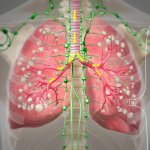
Early data from a clinical study suggest that blocking the Bruton tyrosine kinase (BTK) protein provided clinical benefit to a small group of patients with severe COVID-19. Researchers observed that the off-label use of the cancer drug acalabrutinib, a BTK inhibitor that is approved to treat several blood cancers, was associated with reduced respiratory distress and a reduction in the overactive…

Leading immunologists in Japan are proposing a possible molecular mechanism that causes massive release of proinflammatory cytokines, or a cytokine storm, leading to the acute respiratory distress syndrome (ARDS) in COVID-19 patients. Their suggestions, published in the journal Immunity, are based on recent findings that explain how SARS-CoV-2 enters human cells.

Niels-Bjarne Woods, a researcher at Lund University in Sweden, has developed lung-specific mesenchymal stem cells to treat inflammation of the lungs and fibrosis. This research now may be the needed breakthrough for treatment of the severe respiratory issues related to COVID-19. A clinical study may soon be underway contingent on a successful application to the Swedish Medical Products Agency.…

A computational lung model can be used to reduce damage caused by mechanical ventilation – and could increase survival rates for patients significantly.

Siemens Healthineers announced that its latest critical care testing solution, the RapidPoint 500e Blood Gas Analyzer, has received clearance from the U.S. Food and Drug Administration (FDA), and is now available in the U.S., Europe and countries requiring the CE mark. The analyzer generates blood gas, electrolyte, metabolite, CO-oximetry, and neonatal bilirubin results, which are used to…

Chest X-ray is the first imaging method to diagnose COVID-19 coronavirus infection in Spain, but in the light of new evidence this may change soon, according to Milagros Martí de Gracia, Vice President of the Spanish Society of Radiology (SERAM) and head of the emergency radiology unit at La Paz Hospital in Madrid, one of the hot spots for viral re-production of COVID-19.

Healthcare is going digital worldwide at an incredibly rapid pace. More and more applications for prevention, diagnostics and therapy are being made into apps (with matching hardware) for smartphones and tablets or are even available as wearables for direct use on the body. Digitalisation is also striding forward in Germany, where doctors, therapists and patients still take a fairly analogue…

Anthrax, plague and tularemia are three potent agents terrorists would be likely to use in an attack, according to the Centers for Disease Control and Prevention. Each is highly and quickly lethal to humans. But there are no licensed vaccines for tularemia and plague, and although there is an anthrax vaccine, it requires a burdensome immunization schedule and has severe side effects. Now, a…

The University of Texas Health Science Center at Houston (UTHealth) has received funding through a public/private partnership for the first-ever clinical trial investigating a stem cell therapy for early treatment and prevention of complications after severe traumatic injury. The proposed Phase 2 trial is underwritten with $2 million from the Medical Technology Consortium (MTEC) and $1.5 million…

Innovative ‘artificial lungs’, which help the patients to breathe, offer less traumatic treatment for severe diseases such as acute respiratory distress syndrome (ARDS) or chronic obstructive pulmonary disease (COPD/AECOPD). Respiratory failure is one of the most frequent causes of ICU admission. It may occur inter alia in patients with ARDS, a dangerous condition when the respiratory system…

Progressive treatments offer new chances for cancer patients, but also could result in as yet unknown complications. The number of cancer patients transferred to the ICU for cancer-specific and internal medicine related reasons is on the increase. Caring for them on the ICU is a complex challenge, with interdisciplinary cooperation playing an essential part. Certain criteria need to be met for…

A preliminary human study was conducted to validate an advanced wearable sensor which has been developed by the start-up company BioBeat Technologies Ltd, comparing it to the common manometry method. The 2015 guidelines of the European Society of Hypertension on The requirements of the International Protocol (revision 2010) were used to define the difference between the commonly used device and…

No one knows for sure how they got there. But the discovery that bacteria that normally live in the gut can be detected in the lungs of critically ill people and animals could mean a lot for intensive care patients.

Conventional therapy for ARDS patients and for patients with exacerbation of chronic obstructive pulmonary disease (COPD) has relied on invasive mechanical ventilation. Mechanical ventilation, however, has several major drawbacks: sedation has to be induced and the air being pressed into the lungs with positive pressure can damage the pulmonary alveoli or the diaphragm. Moreover, even maximum…

With every breath you take, microbes have a chance of making it into your lungs. But what happens when they get there? And why do dangerous lung infections like pneumonia happen in some people, but not others? Researchers at the University of Michigan Medical School have started to answer these questions by studying the microbiome of the lungs – the community of microscopic organisms that are…

Research being conducted in the United Kingdom is focusing on techniques to help improve the weaning process for patients coming off mechanical ventilation in hospital intensive care units. Report: Mark Nicholls

The new Carescape R860 is an intuitive critical care ventilator that uses advanced lung protection tools and an innovative user interface to help improve patient care.

Many physiological and observational studies indicate that non-invasive ventilation (NIV) after both thoracic and abdominal surgery is helpful and non-randomised trials have indeed confirmed the benefits.

You’ll find Élie Azoulay everywhere during this year’s International Symposium on Intensive Care and Emergency Medicine (ISICEM).

This May it will be exactly 60 years since the first extracorporeal circulation device to temporarily replace heart/ lung function was successfully used in a clinical setting.

A UK study has highlighted the issue of patients waking up from a general anaesthetic while undergoing surgery. The research, which questioned more than 7,100 consultant anaesthetists, revealed that there was about one episode of accidental awareness in every 15,000 general anaesthetics cases in the three million UK operations in 2011.

Carefully adjusting mechanical ventilator settings in the intensive care unit to pump smaller breaths into very sick lungs can reduce the chances of dying by as much as 8 percent, according to a study by critical care experts at Johns Hopkins. Study participants were evaluated for two years after their acute lung injury.

Jean-Louis Vincent, Chairman of the Dept of Intensive Care, Erasme Hospital, Université Libre de Bruxelles, welcomes visitors to this year’s International Symposium on Intensive Care and Emergency Medicine.

An estimated 9 million children die each year from preventable and treatable causes. A new publication that lists medicines formulated for children is being made available now online by UNICEF and the World Health Organization, to help doctors and organizations obtain some of the 240 essential medicines that can save the lives of children.
New drugs that are helping fight a multi-front war on cancer may do the same for cardiovascular disease, Medical College of Georgia researchers said. Cancer and cardiovascular disease, both among top U.S. killers, share inflammation as a cause. Heat shock protein 90 inhibitors as a treatment could become additional common ground, said Dr. John Catravas, director of MCG's Vascular Biology Center.

In November 2009 about 150 leading infectious disease researchers gathered in Berlin for the National Forum for Innovation in Medicine. During the meeting, Professor Antoni Torres MD (Hospital Clinic-Ciberes, University of Barcelona) gave Meike Lerner insights into community acquired pneumonia research projects and findings

Dr Vasilios Papaioannou, of the Democritus University of Thrace in Alexandroupoli, Greece, received the €15,000 Bernhard Dräger Award for Advanced Treatment of Acute Respiratory Failure during the opening of The European Society for Intensive Care Medicine (ESICM) annual conference in Vienna.

In almost all of the industrialised countries, the general health status - as indicated for example by infant mortality, prevalence of disease, subjective health and life expectancy - has improved during the last four decades. At the same time, however, there is a proven close correlation between good and poor health and high and low socioeconomic status.

Since its early beginnings in Europe, during the polio epidemics of the 1950s, intensive care medicine has grown to become a specialty in its own right and the intensive care unit (ICU) occupies an increasingly important position in every hospital. Intensive care doctors are responsible for the management of very sick patients often with multiple and complex disease processes, and ICUs are now…

Cardiac infarction is characterised by tissue ischaemia with loss of contractile heart muscle.

After previous meetings in the USA (2002) and Japan (2004), this October the 3rd International Workshop of Pulmonary Functional Imaging (IWPFI) took place in the German Cancer Research Centre, based in Heidelberg University, Germany. " 'The clinicians' need for earlier and more detailed diagnosis in pulmonary disease demands a joint interdisciplinary effort to push the limits in pulmonary…

Increase in COPD and chronic respiratory disease patients will challenge the European Healthcare Systems in the future.